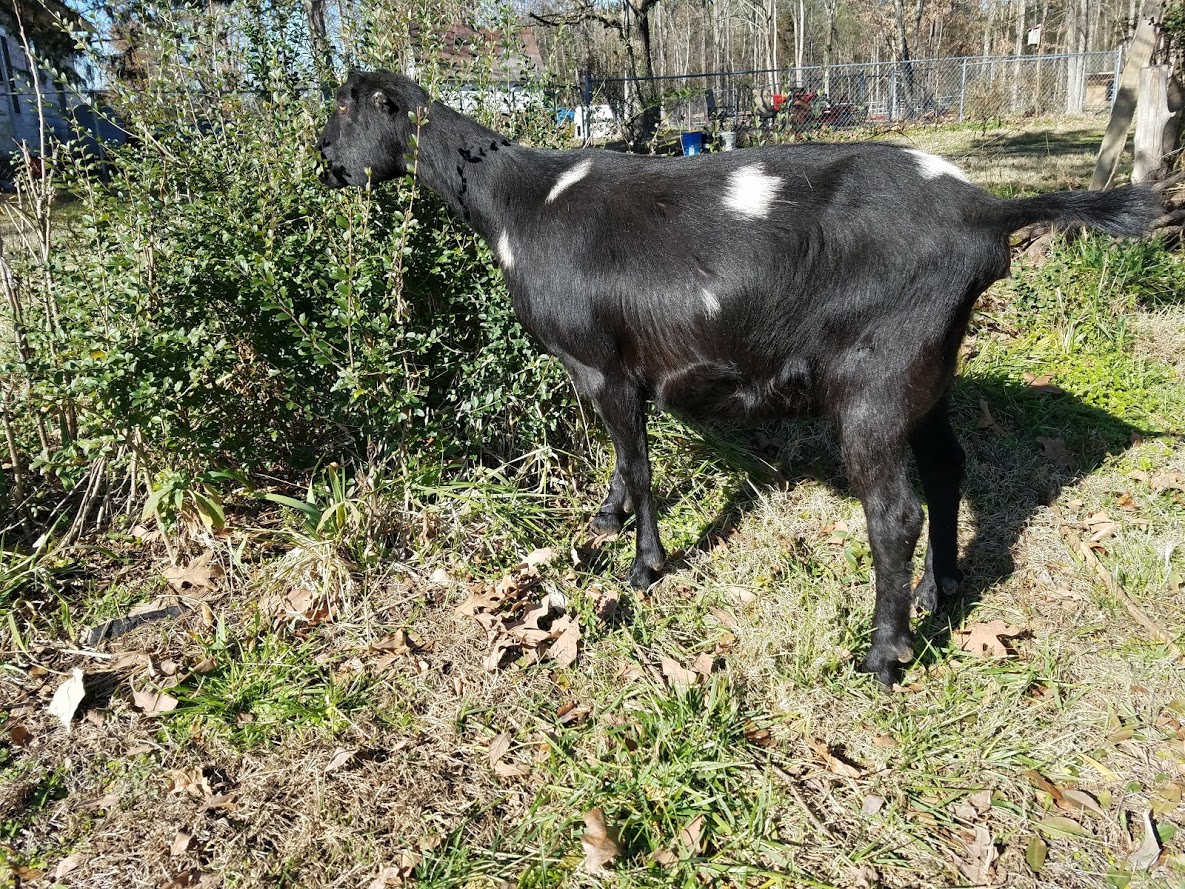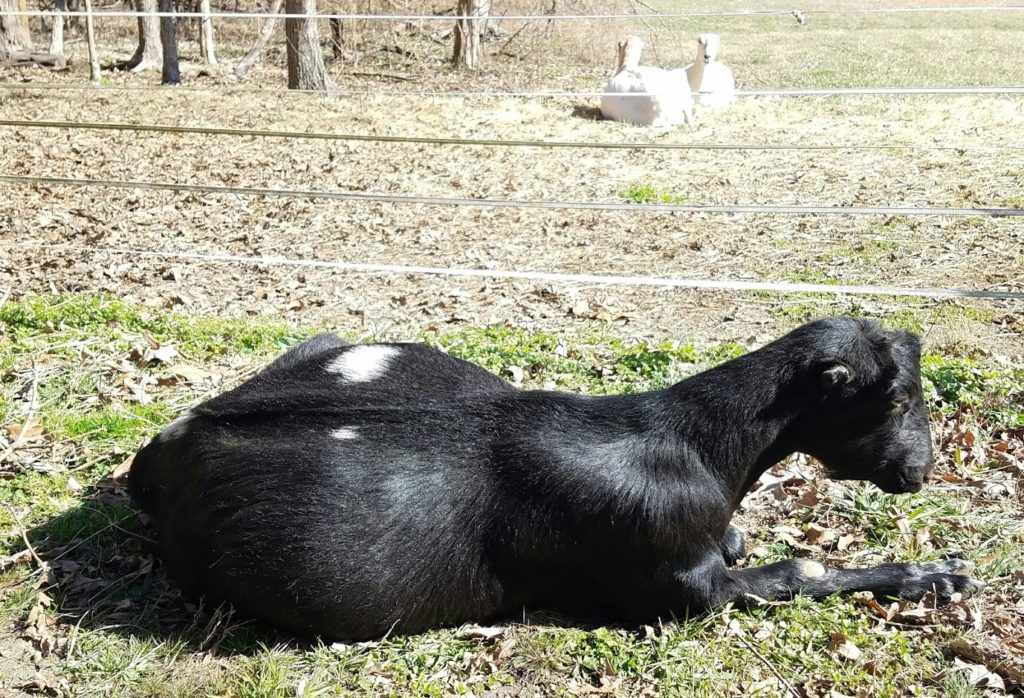Pregnancy Toxemia/Ketosis! What to do?


The article below will prove extremely helpful to anyone with a weak pregnant goat. We have had ketosis on our farm several times and have nursed each one through to successful birthing. Jennifer has some great tips that I wished I had known when we first started raising dairy goats!
Pregnancy Ketosis (Credit to the Author Jennifer Herald Smith-Stanton) Thank you for sharing.
Do you worry every year about heavy pregnant does who are “down” or “shaky” or “just lying around” listless? This worry comes up yearly at this time, especially with new goat owners. If you are new to goats, you may not be aware of Pregnancy Ketosis, but this is a VERY serious disorder that needs veterinary intervention immediately!
More does are probably lost to ketosis than any other disorder or disease. Experienced goat-herders can sometimes handle this problem on their own, but even those of us who have been breeders for many years feel that veterinary attention is necessary when ketosis becomes an acute problem in a doe.
If your doe is due within the next month and starts acting sluggish or just “off”, please consider this disorder immediately and take action. What do you do? Exercise is the cheapest and most easily accomplished way to keep ketosis at bay. Even if you live where it’s cold, take your goats on a walk daily, or make sure they get out of the barn and get some exercise. If your doe is not getting adequate nutrition at this time, she should be! Make sure you are feeding enough TDN (total digestible nutrients) to meet her and her kid’s needs. Don’t overfeed, but feed high quality hay and grains during this period, especially in the North where pasture is at a minimum by this time of year. This may need to be accomplished by several small feedings a day rather than one or two. With large kids or multiple kids, the rumen area is so crowded that some does just can’t eat enough in one or 2 large meals a day. During these last 30 days, it is perfectly okay to increase the protein content of the feed, but also keep the carbohydrates high as well. I personally feel that a lower protein grain that is higher in energy is better until they actually kid.
The whole process of ketosis is that the does’ rumen is being crowded by the kids in her uterus. She may not be getting around as well due to the increased weight of the kids. She doesn’t eat as much and her rumen can’t hold as much as in the non pregnant stage. So she compensates by drawing on body stores of fat for energy. The fat in an animal is not only “just fat” but is also a way that the animal can get rid of toxins, etc in their system. Those toxins are stored in the body fat. When there is a rapid utilization of the fat stores these toxins are circulated back into the blood stream and they can put her into ketosis. If you have had any cases of poisoning or bad feed during the year, be very watchful for a sluggish doe. If she goes into ketosis, the toxins can easily overcome her system and will kill her!
Energy is very important at this stage for the doe. If you have access to ketone sticks or paper you can check her ketone levels through her urine, but most vets will use the symptoms described above to identify ketosis and will treat accordingly. You can buy ketone sticks (papers) at any pharmacy as they are the same thing that diabetics use. Wet them with urine from several does to get the “normal” values. Then you know when the color changes are different you have problems. Also, a ketotic doe will have breath (sometimes, not always) that smells different.
A doe in severe distress usually can be pulled out of this type situation through use of an IV from the vet, if caught immediately. If she has been down for more than 10 hours, the chances of survival start decreasing dramatically. Our vet prepares an IV with several vitamins and glucose with a bit of calcium (ketosis can cause even a pregnant doe to start into milk fever as well). He gives this IV slowly to a downer (a doe who can’t get up at all and is shaky). Ninety percent of the time, she is up and moving around (before the IV is done) if she is caught early enough. Again, I must emphasize exercise. We used to allow the does to lie around in the barn and got some real problems yearly with ketosis. Now we make them get out and exercise daily. We don’t get a case of ketosis unless the weather is bad for many days and they are stuck in the barn. Even overweight does (prime candidates for ketosis) can get through that last stage of pregnancy fine if they get out and move around every day and are fed small meals high in carbohydrates.
Electrolytes work very well for a shocky doe that is not down yet. Buy a bucket of calf electrolytes (non medicated) from a vet supply like Jeffers and have them on hand. Jeffers and other suppliers also have a product called Ketogel. This is good, but use very cautiously and sparingly! It is propylene glycol and can virtually burn their rumen’s, so we don’t use it often, and if we do use it, we use no more than 3-4 tablespoonfuls once or twice a day. Check every doe in your barn every day to make sure she is up and “perky”. When you walk into your barn, take 30 seconds to stand in the barn door and observe your does. A doe that is heavy pregnant and holding her ears down will usually be a prime candidate for going into ketosis. A happy, alert doe (other than goats with lop ears will hold her ears up and forward usually. Make sure they are doing it. A doe that doesn’t feel well will also not have that “bright eye” that we associate with good health. Look for signs of listlessness! Just those 30 seconds of observance done every day of the year will help tremendously in all signs of illness in all goats. Learn to always be observing the animals. You will soon know when something is just “not right” and have time to react before things get too far along! So watch those does daily and know what normal looks like so you will know what to look for and how to react to ketosis. This will literally save your does life!
Last Updated: 03/11/2000 10:52 AM
Copyright, 1998
Rodney & Jennifer Smith